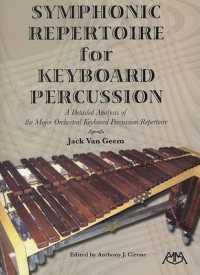Full Description
One of the best-known prose stylists in contemporary musicology, Susan McClary brings together a fascinating set of essays in Making Sense of Music that focus on temporality and the body as ways of understanding music. Prefaced by a Foreword from celebrated theatre director Peter Sellars, the chapters engage variously with ribald songs of the Renaissance, the performance of Bach fugues, time-bending in seventeenth-century keyboard works, Grieg's Norwegian swerve, Florence Price's reclaiming of the spiritual, erotic scenarios in Mahler, representations of motherhood in Kaija Saariaho's operas, and queer elements in classical and popular repertories. McClary grounds her readings within the specifics of historical time and place, even as she shows how the music itself relies on gesture and the body. In sum, this book demonstrates in case studies taken from a wide variety of practices how music draws upon and shapes human subjective experience.
Contents
Foreword by Peter Sellars
Fundamentals: An Introduction
I. Why I Do What I Do
1. A Life in Musicology: Stradella and Me
2. In Praise of Contingency: The Powers and Limits of Theory
3. Evidence of Things Not Seen: History, Subjectivities, Music
4. Writing about Music - and the Music of Writing
5. The Bodies of Angels
6. The Lure of the Sublime: Revisiting Postwar Modernism
7. Playing the Identity Card: Of Grieg, Indians, and Women
8. The Object/The Objective of Analysis: The Case of Florence Price
II. Messing With Early Music
9. Unwashed Masses: Music for the Morning After
10. Tumescence and Detumescence in a Monteverdi Madrigal
11. Doing the Time Warp in Seventeenth-Century Music
12. In the Realm of All the Senses: Analyzing the Music of Élisabeth-Claude Jacquet de la
Guerre
13. Salome in the Court of Queen Christina
14. Adorno Plays the WTC
III. Sex and Gender, Redux
15. The Classical Closet
16. Soprano Masculinities
17. Sister Campers
18. Kaija Saariaho, Mater
19. Mahler Making Love: Mengelberg's Adagietto
Index








